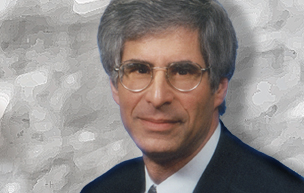Two high-profile jury verdicts rendered last month in Wisconsin and Georgia in the Kyle Rittenhouse and Ahmoud Arbery cases show that, despite all its faults, there’s still considerable vitality in the American jury system.
The right to a jury trial in all criminal cases and most civil suits for money damages is enshrined in the U.S. and state constitutions. Still, there’s been a lot of criticism of the jury system on the grounds it’s cumbersome, expensive and susceptible to racial bias.
Yet under the right conditions, a jury remains an honest arbiter and great leveler, perhaps the only one left in society in which the outcome of consequential disputes can be insulated from the corrosive influence of wealth, political power and mass media.
It’s also one of the few institutions where citizens who are otherwise siloed from one another by zip code, education and social class are compelled to listen to the same facts, engage in civil face-to-face debate, and decide issues in a collegial fashion.
The verdicts in the Rittenhouse and Arbery cases demonstrated that impartial jurors, presented with substantial evidence in a competently conducted trial, could come to a reasonable and unbiased conclusion — even amid the roiling vortex of public opinion which had transformed the accused into avatars of national controversies over white nationalism, Black Lives Matter and guns rights.
On Nov. 19, a Wisconsin jury acquitted Kyle Rittenhouse, a teenage police-wannabe who had traveled to Kenosha, Wisconsin, in August 2020 to attend a rowdy demonstration protesting a white policeman’s shooting of Jacob Blake, a young African-American. Rittenhouse was toting an AR-15 semi-automatic rifle which he used during the demonstration to kill two protestors and wound a third.
Rittenhouse said he went to Kenosha to guard businesses from looters and to render first aid to anyone injured in clashes between protestors and counter-protestors. He claimed he only fired in self-defense after being attacked. Indeed, videos and eyewitness testimony confirmed that he’d shot one man who aggressively charged him, a second who hit him with a skateboard, and a third who approached him holding a gun.
Images of Rittenhouse marching cockily along Kenosha’s streets with his AR-15 slung over his shoulder and voicing praise for Donald Trump on his social media pages caused most on the left to assume he was just another white supremacist and militia member. It’s doubtful that he was either, and, though he showed extremely poor judgment by inserting himself armed into such a volatile situation, the evidence was more than sufficient to raise a reasonable doubt as to his guilt and justify an acquittal.
On Nov. 25, a jury in Brunswick, Georgia, convicted three white men for murdering a 25-year-old Black man, Ahmaud Arbery, a former high school football star and aspiring electrician, who’d been jogging through a largely white subdivision.
The defendants claimed they were trying to make a citizen’s arrest to detain and question Arbery whom they suspected of burglarizing a nearby home that was under construction. The three chased and cornered Arbery with pickup trucks and a shotgun, and Arbery was shot to death while trying to wrest the shotgun from one of them.
The defendants asserted self-defense but to no avail. The evidence showed they’d had no legitimate reason to suspect or pursue Arbery. Their actions seemed based on nothing more than an assumption that a Black man running through a white neighborhood had to be up to no good, and it was they who’d provoked the desperate struggle that they claimed justified their use of deadly force.
Yet the odds appeared to be against convictions for those who’d killed Arbery.
The defendants were white, and one of them, Gregory McMichael, a former police officer with a 37-year tenure, had connections to the local district attorney’s office. The defense attorneys used their preemptory (arbitrary) challenges to eliminate all but one Black member in jury selection, with the result that 11 of 12 jurors chosen were white in a county where more than 26% of the residents were African-American.
One defense lawyer overtly played the race card in closing argument with the scurrilous remark, “Turning Ahmaud Arbery into a victim after the choices that he made does not reflect the reality of what brought Ahmaud Arbery to [the subdivision] in his khaki shorts with no socks to cover his long, dirty toenails.” Meanwhile, the prosecution avoided almost all mention of racism in order to avoid offending the tender sensibilities of the nearly all-white jury.
Finally, Brunswick, in southeast Georgia, lay in the heart of the Deep South, where, not so long ago, a person of color could be arrested, jailed and even lynched just for taking an uninvited stroll through a white neighborhood.
In short, two juries in two different regions of the country in two highly controversial cases confounded popular expectations and did exactly what they were sworn to do – rendered just verdicts.
Elliott Epstein is a trial lawyer with Andrucki & King in Lewiston. His Rearview Mirror column, which has appeared in the Sun Journal for 15 years, analyzes current events in an historical context. He is also the author of “Lucifer’s Child,” a book about the notorious 1984 child murder of Angela Palmer. He may be contacted at epsteinel@yahoo.com
Send questions/comments to the editors.



Success. Please wait for the page to reload. If the page does not reload within 5 seconds, please refresh the page.
Enter your email and password to access comments.
Hi, to comment on stories you must . This profile is in addition to your subscription and website login.
Already have a commenting profile? .
Invalid username/password.
Please check your email to confirm and complete your registration.
Only subscribers are eligible to post comments. Please subscribe or login first for digital access. Here’s why.
Use the form below to reset your password. When you've submitted your account email, we will send an email with a reset code.